Dysphagia: Oral And Esophageal
Article Sections
Introduction
Dysphagia (difficult or abnormal swallowing) is a symptom of various underlying conditions affecting the oropharynx, esophagus, or surrounding structures. It can significantly impair nutrition, hydration, and quality of life and may lead to complications such as aspiration pneumonia, a leading cause of death for elderly patients. Appropriate evaluation and management can significantly decrease morbidity and mortality.
Normal deglutition
Normal deglutition (video 1) (swallowing) is a complex process that involves 3 phases:
- In the voluntary oral phase, the food bolus is collected in the back of the mouth and lifted upward to the posterior wall of the pharynx.
- This initiates the pharyngeal phase, which consists of involuntary pharyngeal muscle contractions (eg, soft palate elevation, base of tongue pushes posteriorly) that propel the food bolus to the esophagus. The airway is protected during swallowing by displacement of the larynx superiorly and anteriorly, sealing of the laryngeal vestibule by the epiglottis tilting backward, and closing of the glottis by vocal fold adduction (closing). For the bolus to pass out of the pharynx, the upper esophageal sphincter relaxes and the inferior pharyngeal constrictor muscles contract, which generates enough pressure to push the bolus into the esophagus.
Continue Learning with UWorld
Get the full Dysphagia: Oral And Esophageal article plus rich visuals, real-world cases, and in-depth insights from medical experts, all available through the UWorld Medical Library.
Figures
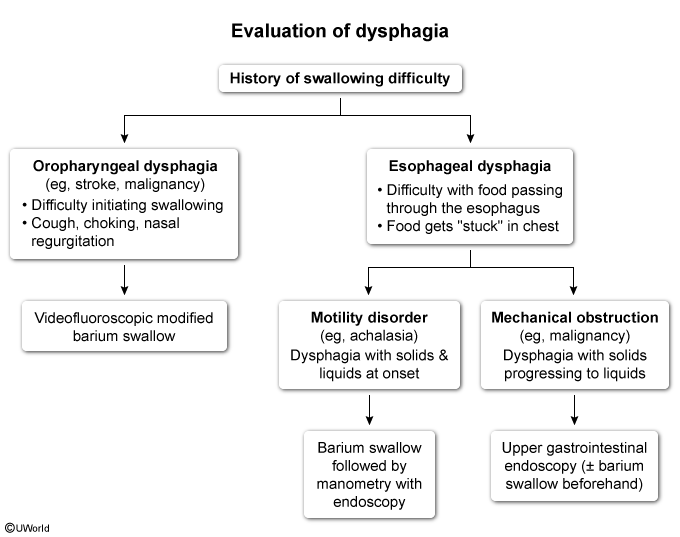
Figure 1
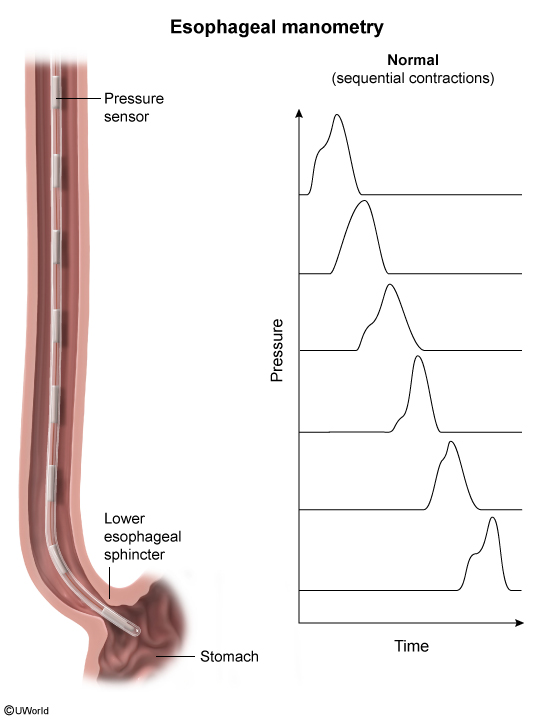
Figure 2
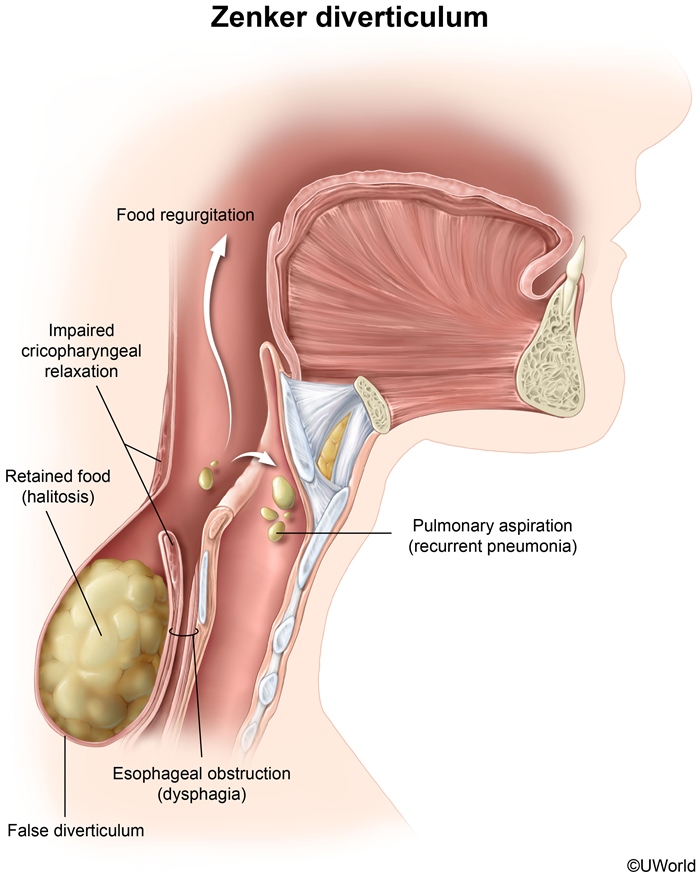
Figure 3
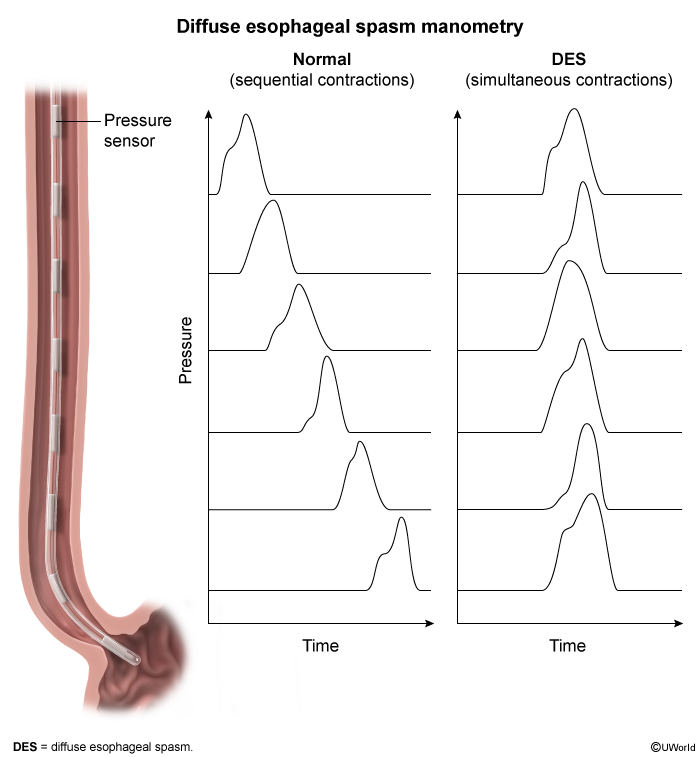
Figure 4
Images
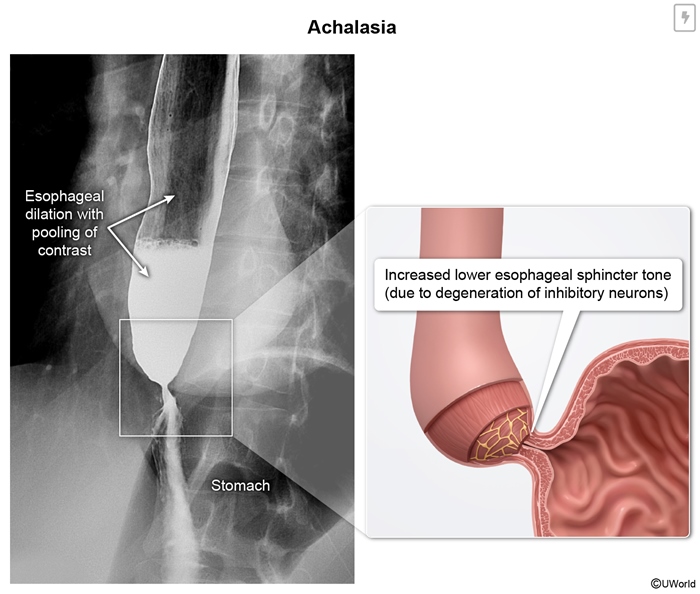
Image 1